
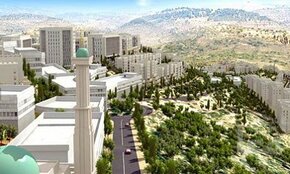
TEL AVIV, Israel (Ma’an) — Israel will stop any assistance offered to the Palestinian Authority to build a new city, Ar-Rawabi, in the West Bank, Israeli press reported Thursday.
Israel’s Defense Minister Ehud Barak will inform the PA that assistance will be withdrawn, despite months of cooperation, because the construction does not comply with laws to protect the environment, the Hebrew-language daily Israel HaYom reported.
The news follows reports Wednesday that right-wing Israelis were planning further protests against the city on the grounds that roads leading to it would divide the illegal Benyamin settlement.
Previous demonstrations against the planned community have seen far-right Israelis break into the construction site and threaten workers.
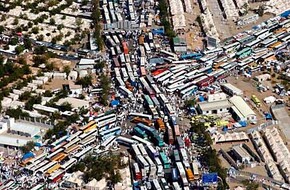
JEDDAH: Plans are afoot to establish a new pilgrim city north of Mina to accommodate 1.5 million people during Haj. Higher authorities have instructed the Council of Senior Islamic Scholars to conduct research into the feasibility of the plans.
“There are two options. Either we construct concrete buildings or set up tents with modern designs,” said Habib Zain Al-Abidine, deputy minister of municipal and rural affairs, who estimated the cost of building the new city at SR30 billion.
Al-Abidine said the new city project would be completed within five years. “We’ll construct either multistory buildings or tents to accommodate 1.5 million pilgrims,” he told Okaz Arabic daily.
The new city project in Mina would enable the Saudi government to allow more pilgrims from within the Kingdom and abroad to take part in the annual pilgrimage. More than 2.5 million pilgrims, the majority from abroad, perform Haj every year.
The minister said plans for three new projects worth SR1.4 billion would be presented to higher authorities for approval. They include the construction of toilets and car parks in the holy sites and the shifting of slaughterhouses outside Mina.
He said over the past 17 years, a number of development projects have been carried out at the holy sites at a total cost of SR30 billion.
Al-Abidine said the new train system linking the holy sites of Makkah, Mina, Arafat and Muzdalifa would transport 150,000 pilgrims this year.
“We have no plan to change the shape of the trains because the present shape was selected on the basis of scientific studies,” he said.
Al-Abidine said the new railway system was implemented in accordance with international standards. “When trains operate between the holy sites, pilgrims will feel the difference, especially with the disappearance of 30,000 buses,” he pointed out.
Al-Abidine said the government has spent more than SR6 billion on the railway project.
He said the Chinese company, which carried out the Mashair railway project, is obliged to operate and maintain the trains for three years. It will also train Saudis in operation and maintenance. “We have conducted workshops for Tawafa organizations to operate railway stations and manage crowds,” he said.
He said the new railway system would serve domestic pilgrims in the first phase, adding that ticket fares will be included in the service charge. He said trains would operate throughout the year.
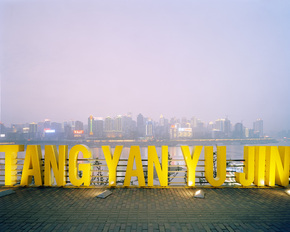
China’s Chongqing municipality with a population now at 32 million is the fastest-growing urban center on Earth. Economic migrants from the countryside and neighboring provinces have swelled Chongqing at a rate of between 500,000 to 1 million people every year.
"A decade ago — as part of plans to raise living standards in the western provinces — the Chinese government put Chonqing at the center of a $200 billion program of investment in infrastructure and commerce. The Guardian has described it as “the biggest megalopolis you’ve never heard of.”
City of Ambition, an online “gallerybook” by Turkish photographer Ferit Kuyas, is a spectral and haunting look at the drastic urbanization of what was once a relatively modest-sized metropolis. Chongqing’s population in its main urban areas was a little over 5 million in 2000. By 2020 it’s estimated that it will be 20 million."
Kuyas’ photos show a rapidly expanding city shrouded in fog as it treads towards a newfound status as one of the world’s megacities.
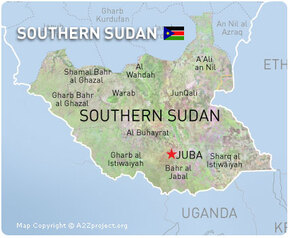
Plans are afoot to build nucleus cities outside the South Sudanese state capitals. “The plan seeks to avail affordable housing to poor citizens across South Sudan. A house in Juba and other state capitals is very expensive’, he said. At the same time the Ministry announced that it will make the South Sudanese capital a “classless” city.
Dr Wani said it is not very healthy for the Ministry to start classifying the society that revolves from the grassroots system.
“In the next town plan we will get the, land build it and any potential occupants will get the houses at affordable rates. The system that we had in the past where houses are classified is not going to happen again in the new town planning for South Sudan”, he said.
He added that the Ministry’s objective is to make the life of every citizen easy by creating the space to accommodate them, adding that the policy would apply to all the ten states.
“A Housing master plan for the whole region is going to be drawn after which the design of each state capital will be created differently”, said Dr Wani.
He also announced that all the nucleus cities in the state capitals will have new names to identify them.
“The new city in Juba will be called ‘Rhino city’, in Wau we will have ‘Zaraafe city’, and in Western Equatoria State there will be ‘Pineapple City’. This would enable people to identify with the states quicker”, he said.
“We believe that by November this year we shall have finished with the master plan and present it to the Council of Ministers for approval after which we shall start with the design and documentation of the houses. The implementation will start by April next year”, said Dr Wani.
The Undersecretary said the Ministry has hired one of the best town planners in the world to plan South Sudanese cities.
At the press briefing the GoSS Minister of Housing and Physical Planning Jemma Nunu Kumba said the cost of building South Sudanese cities stands at 10.1 billion US Dollars.
Kumba said her Ministry is working on a 20 years master plan for the semi-autonomous region.
“We do not currently have the full amount but we will start off with what we have in the budget”, she said.
“Right now some Ministries don’t have enough office space and accommodation. We have our plan in place to set up our cities and to re-organise and to re-plan Juba. Because Juba is mostly made up of slums and it’s our responsibility to design it”, she said.
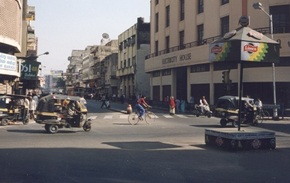
After clearing 10 new Town Planning (TP) schemes of Ahmedabad recently, the state government is planning to announce more new TPs for Ahmedabad. The Ahmedabad Urban Development Authority (AUDA) has submitted primary proposals for around 14 new town planning schemes for various developing areas of the state.
The new schemes are: Sarkhej-Ofal-Fathewadi (86 to 90), Chandkheda-Tragad-Jundal (69), Makarba (84-B), Tragad (233), Chandkheda-Jundal (74), Vejalpur (3-varied), Kalol-Saij-Aarsolia (3), Koteshwar (Motera-48), Jundal (234), Charodi-Tragad (36), Tragad-Jagatpur-Chandkheda (65) and Chainpur-Ranip.
Highly placed sources in the state government said that, “actually these TPs were pending for a very long time. The state assembly promissory committee had asked the state government to clear these TPs at the earliest. They will stimulate the real estate development in the city.’’
Government had announced preliminary drafts TP No. 39 of Thaltej, No. 239ofBhat and No. 94 of Hathijan-Ropada. There is high growth of residential and commercial property development in these areas. Highly placed sources in the state government saidthat, “many premium residential and commercial projects like malls and corporate offices are coming up in these areas.”
These places are becoming trendy in the middle income group. TPs will help in regulation and systematic development of these areas. Government will soon appoint (Town Planning Officers (TPOs) for these schemes with whom concerned people can file their grievances and share their ideas.”

A major Chinese investment that will see That Luang wetland and surrounds developed into a new urban center is still going ahead, according to senior Vientiane officials.
Vientiane Integrated Development Project Director, Mr Sihoun Sithileuxay made the confirmation yesterday to play down widespread speculation that the investor had withdrawn from the US$1.1 billion “new town” development project at the wetland.
“The new town project at That Luang wetland and the construction of the National Sports Stadium are inseparable,” he told Vientiane Times after attending a seminar on That Luang Wetland Management at Lao Plaza Hotel in Vientiane .
At the end of last year, the Food and Agriculture Organisation (FAO) proposed the preservation of 20 square km of That Luang wetland, with the stated aims of protecting existing hydrology, fauna and flora, livelihoods as well as the cultural and historical values of the area.
The proposal and debate around it has raised questions among the public regarding whether the planned investment and project had been cancelled.
There has also been little visible evidence that the construction will start soon.
Mr Sihoun said the Vientiane Administration had completed demarcation of 670 hectares for the project,
He said the government was in discussion with investors on the acquisition of funds to compensate people who have to leave the project area.
Once the two sides can conclude discussions, the new town development project will move forward to the next phase, he said.
“We can not say exactly when the two sides will complete their discussions on the issue,” he said, adding that compensation will cost more than US$100 million (more than 847 billion kip).
Another official responsible for the planned new town project, Mr Saythavy Nhaengvannavong, said the Lao government would not change its mind regarding the development of the That Luang wetland area, as the agreement had been made by the two sides.
However, he was unable to confirm when construction would begin.
He said the China Development Bank would provide funds of about US$1.1 billion for Chinese companies to develop the new town, which will include schools, hotels, a hospital, shopping centre and some light industry.
Lao government also will provide 100 hectares of land in Dongphosy area and 430 hectares at Km 18 for the Chinese companies to develop the new urban centre.
The policy of the Lao government is to be active in mobilising investment into the country to secure continuation of economic growth and provide sufficient jobs and income for the nation’s growing population.
Source: Vientiane Times
January 27, 2010

Southern Sudan has unveiled ambitious plans to remake its capital cities in the shapes found on their state flags, and an official says the government is talking with investors to raise the $US10 billion the fanciful communities would cost.
The plan in the war-torn region comes ahead of a scheduled January referendum on independence, which most people here believe will lead to the creation of the world’s newest country. The south is rich in oil, but poverty and hunger is high throughout the region, which is struggling to recover after a civil war more than two decades long.
The $US10 billion concept will take decades to carry out, officials concede, though it may never escape the planning stages. The southern government’s own 2010 budget was only $US1.9 billion, and the U.N. says more than 90 percent of Southern Sudan’s population lives on less than $US1 a day.
The plans have evoked bemused smiles — or outright laughter — in Juba, a town that until two years ago barely had any paved roads.
"It doesn’t seem like the (Government of Southern Sudan) should be using its resources or staff time when the people of Southern Sudan lack basic services like health care and water," Nora Petty, an aid worker in Juba with the Malaria Consortium.
Government officials concede that a lot of money is needed to finance the project, which includes a plan to transform two state capitals into the shapes of a giraffe and a pineapple.
Juba — the capital of Southern Sudan — is to be reshaped into a compact rhino with two pointy horns. The new area will be called "Rhino City."
Officials said the plan would bring order to the city’s chaotic layout.
"Juba is made up of slums," said Jemma Kumba, the minister of housing and physical planning.
Detailed architectural drawings of Rhino City show that Central Equatoria’s police headquarters would be situated at the rhino’s mouth, an amusement park at the ear, an industrial area along the back and residential housing throughout the four legs.
It’s very innovative. That’s our thinking. It’s unique. It’s the Ministry of Housing thinking you have to be unique to attract the people," said Daniel Wani, undersecretary of Southern Sudan’s Ministry of Housing and Physical Planning.
If the animal-shaped towns come to be, they will join other famously shaped cities around the world. Dubai created several palm-shaped residential islands off its coast. In Argentina, planners shaped the town of Ciudad Evita into the form of Eva Peron, an actress and wife of former President Juan Peron who was known as Evita.
Of course, per capita income in the United Arab Emirates, where Dubai is located, is around $US42,000 a year. In Sudan, it’s just $US2300.
And unlike well-developed Dubai, Southern Sudan still lacks basic infrastructure such as roads to connect its state capitals. Outside the southern capital Juba, structures aside from mud huts are rare, and in Juba, services such as electricity and sewage are a luxury.
The Minister of Roads and Transport, Anthony Makana, told The Associated Press on Tuesday that he needed up to $US6 billion to pave 13,000 kilometres of roads in the south.
Makana said the project would connect all of the southern state capitals, but he noted that funding is a concern, given that the government has not finished paying the contractors who built 7000 kilometres of red clay and gravel roads since 2005, when the landmark peace accord between the north and south was signed.
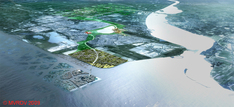
Almere draagt de Schaalsprong - de groei tot de vijfde stad van Nederland - voor als nationaal project, dat een plaats moet krijgen in het nieuwe regeerakkoord. Dat laat het Almeerse college van Burgemeester en Wethouders vandaag weten in een open brief aan informateur Ivo Opstelten.
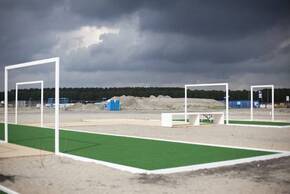
Op een zeer regen- en stormachtige zondagmiddag eind mei verzamelde een groepje mensen zich in Almere Poort in het Tijdelijk Museum Almere. Op deze toepasselijke plek in het hart van Almere’s jongste wijk in aanbouw gaf David Hamers een lezing over de geschiedenis en de toekomst van de suburb.
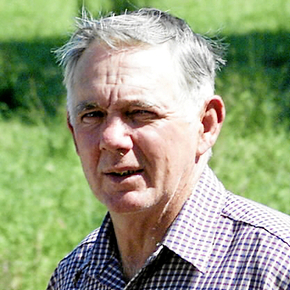
BRIDGE builder, beef farmer and developer Nelson McIntosh will pay a further $1.7 million to consolidate his ownership of the future Bonegilla township near Lake Hume.
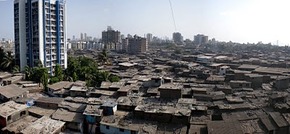
After reading with interest Katia’s and George’s recent posts on Dharavi, I thought I’d share some reflections on contested urbanism and the right to the city in Dharavi from various papers I have been collaborating on with Dr. Camillo Boano, Lecturer and Director of the MSc Buidling and Urban Design in Development at University College London and fellow former student William Hunter, based on research we were part of in May 2009 on the intersection between space, policy and livelihoods in community-driven slum rehabilitation projects in Dharavi.
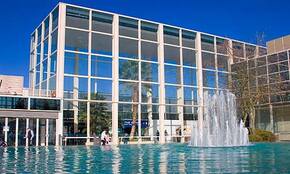
At the heart of the concrete and brick labyrinth of Milton Keynes, hard by Midsummer Boulevard, a certified national treasure has been identified. To the disgust of its owners and the bewilderment of many customers, the town’s 1970s shopping centre is now a Grade II listed building.
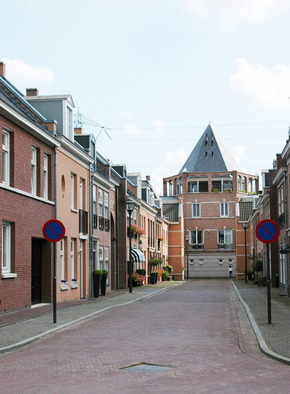
Is er een verband tussen de populariteit van de themawijk en de nieuwe klassenstrijd die nu woedt? Stadssociologen Sabine Meier en Arnold Reijndorp onderzochten de aantrekkelijkheid van themawijken voor plannenmakers (gemeenten, ontwikkelaars, architecten) én voor bewoners.

IF YOU are the sort to worry at night about man-induced climate change, then book a stay at any of the new high-rise hotels going up on the edge of China’s big cities—start looking for them around the third ring road. When you stagger red-eyed out of bed to peer into the murky dawn, you will see rank upon serried rank of raw “superblock” developments, a mile apart, marching into the distance. You think of the emissions involved in their carbon-hungry construction, the traffic jams on the arteries tying them into the expanding city, and the new coal-fired power stations being built to light them up. And you wonder how Asia can change its habits—energy consumption grew by 70% in the ten years to 2008—before it is too late for all of us.
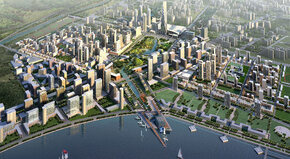
Songdo International City in South Korea. The New Songdo City, to be completed by 2015, has been founded on the idea of a global model of the city with the most innovative infrastructure, schools, buildings, transport systems, and services.
What are the practical differences and how will they influence the life of the residents? Let’s imagine individuals that get up every morning to work. Their home computers collect information for the shopping lists and order the goods in grocery stores. At the same time the computer systems are planning the routes to their workplaces, taking into account traffic conditions and their changes - simultaneously handling transportation needs of all residents of the city.
Read more: http://www.articlesbase.com/communication-articles/the-third-revolution-in-the-computing-world-2863151.html#ixzz0uInkQVSB
Under Creative Commons License: Attribution
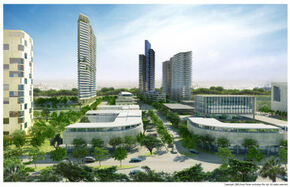
Bangalore’s latest urban expansion, designed by Andy Fisher workshop, was launched recently as a blueprint for future sustainable developments by Patel Realty. The 50 hectare development has been formulated to encompass environmental strategies, business incubators, commercial facilities, social, recreational and lifestyle needs. Offering a broad range of residential developments, catering to residents from a diverse cross-section of the market, Patel Realty hope to provide a new opportunity for locals to live, work and grow.
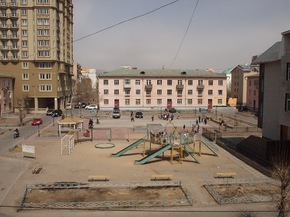
Located in Northern Asia between Russia and China, Mongolia is still transitioning from its days of being a part of the former Soviet Union. Becoming a democratic nation in 1990, the country has a current population of three million, with forty percent living a pastoral lifestyle. Amongst economic crisis, one of the major issues the country faces are its nomadic populations being forced to move into urban centers in ger (or yurt) districts, particularly Ulaanbaatar its capital city. As a reaction to nomadic traditions, a decrease in livestock, and adverse economic and weather conditions in rural areas, the capital has been unable to cope in terms of city planning, provision of services, and protection of the environment.

SWA Group announced this week that its plan for a transformative 7-kilometer swath of Yangtze River waterfront of the Hexi New Town in Nanjing, China, was selected as the winning entry among the four finalist teams and will begin detailed design in July toward anticipated initial construction beginning in 2011. Nanjing is one of China’s most ancient metropolitan centers dating back 2500 years and was for centuries the capital of China, as shown in its name: Nan meaning ‘southern’, and Jing meaning ‘capital’.
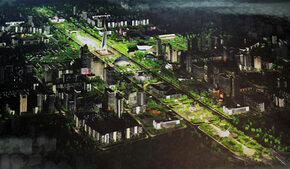
A $7 billion new town is being planned in Vietnam, across the Red River from capital city Hanoi. And though the creation of thousands of new houses is welcomed, many are concerned about development along the sensitive riverfront.
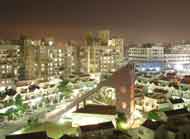
Magarpatta is a shining example of how urban areas can expand to accommodate the needs of urbanisation without hurting the interests of rural landowners through forced or unfair acquisition. Magarpatta is a 430 acre area located in the outskirts of the city of Pune, which itself is spread over an area of 60,000 acres. It has been part of the Pune Municipal Corporation since 1960, even though it was in the agricultural zone. Magarpatta has been developed over
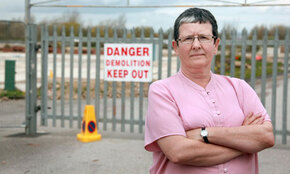
Are towns built by the UK’s leading supermarket the future of urban development?
Imagine living in a Tesco house, sending your child to a Tesco school, swimming in a Tesco pool and, of course, shopping at the local Tesco superstore. According to the Commission for Architecture and the Built Environment (Cabe), the government’s adviser on architecture and design, this collective monopoly is not an imaginary dystopia. "Tesco Towns" on this model are already being planned across the UK, from Inverness in Scotland to Seaton in Devon.
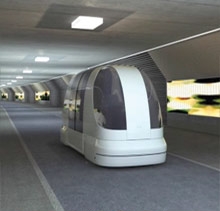
Abu Dhabi’s Masdar is undertaking a sweeping rethink of its high-profile Masdar City project, conceding that it may be forced to scrap its existing strategies for generating electricity and intra-city transportation.
In the past two months Masdar has dramatically scaled back its ambitions and timetable for the city. The first phase – set to house both Masdar’s headquarters and the International Renewable Energy Agency – is currently under construction on the outskirts of Abu Dhabi.
Now Masdar officials acknowledge that much of the electricity that will power the city may have to be imported, rather than produced on site, as planned. Moreover, they concede that the city’s electrically-powered vehicles – known in Masdar-speak as Personal Rapid Transport pods – are unlikely to be rolled out across the entire project.
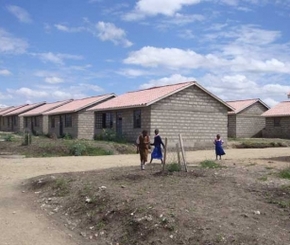
Kaputei Town will provide new homes for 2000 families, drawn mostly from the slums surrounding Nairobi.
Jamii Bora Trust has recently launched Kaputei Town, a pioneering urban planning project 60 km south of Nairobi which is designed to be ecofriendly and will include residential neighborhoods, commercial, cultural and social centers as well as a wetlands wastewater recycling facility.
Building new towns such as Kaputei will contribute greatly to removing pressure from the city center and creating new economic ecosystems that have their own micro-economy and that complement neighboring communities and local industries.
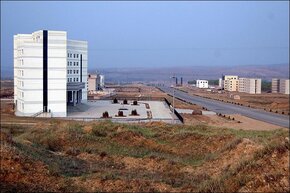
On a series of barren, wind-swept hills in China’s Inner Mongolia, a new town stands half-finished and deserted.
Several buildings have been completed; others are empty concrete shells, abandoned by workmen before their job was done.
Qingshuihe’s new county town
In pictures: Ghost town
Wide boulevards stretch out in four directions, but there is little traffic. An occasional tractor potters along what should be busy streets.
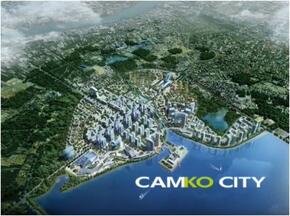
Suburbia is coming to Phnom Penh by 2020, with at least five multibillion-dollar new urban centers or
Phnom Penh officials said they see the sprawling, self-contained developments, which would include residential and commercial areas as well as industrial parks and full public services, as an answer to overcrowding and traffic congestion and a means to increase commercial development beyond downtown areas.
"I think if everything goes smoothly as planned, all of the satellite city projects will break ground by 2009," said Phnom Penh deputy governor Pa Socheat Vong. "To my knowledge, the satellite city projects are moving ahead on schedule, and I don’t see any of them as likely to fail."

